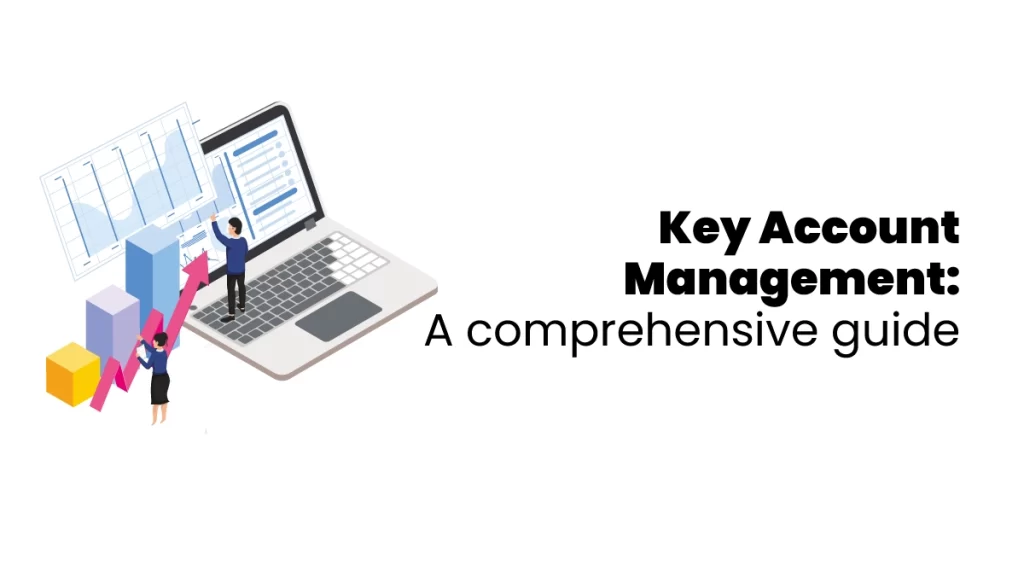Key Account Management (KAM) is about building solid relationships with a business’s most important clients. Key account managers work closely with these clients to help them become more sustainable and boost profits. It’s really about teamwork and understanding what clients need to succeed!
What is Key Account Management (KAM)?
KAM is a way for businesses to build solid, long-lasting relationships with their most prominent clients. This helps the company gain credibility in different industries and builds trust, making it easier to attract new clients.
KAM usually means having knowledgeable team members available for guidance and valuable resources. This helps create strong, ongoing partnerships, making the business more profitable.
What does KAM do?
- KAM helps to make a proper plan to manage critical accounts strategically.
- It allows everyone involved, including internal teams and external stakeholders, to build effective strategies.
- It strengthens relationships with your most important clients, helping you discover more opportunities to upsell and cross-sell.
- It improves your chances of expanding key accounts and helps you make more accurate revenue predictions.
To understand this key account management, joining accounting courses will help you learn about KAM.
Principles of KAM
Key account managers follow fundamental principles to build strong relationships with important clients, improve communication, and boost sales.
1. Get to Know Your Clients
Understanding your clients is always important. Account managers should understand where their clients stand in the market, their strategies, their finances, and what products or services they offer.
2. Designed Solutions for Unique Needs
Every client is unique and works in different industries. An excellent key account manager uses a cross-functional approach, offering designed services and tools that fit each client’s needs. By working closely with clients, they can find out what’s important to them and provide solutions that help them succeed.
3. Keeping Everyone Updated
Another key principle for account managers is to keep their clients’ shareholders in the loop about any business issues. It’s necessary to quickly devise a plan to address these problems before they become bigger.
4. Knowing the Daily Details
Account managers should also understand how their clients make money and how they run their daily operations. This understanding helps them notice significant business changes, offer timely solutions, and position themselves as trusted resources and industry experts.
Steps to Create a Key Account Management Strategy
Want to add key accounts to your KAM strategy? Here’s a quick and straightforward guide to help you build robust key account management strategies:

Start with Research and Create a Key Account Profile
Do some research to build profiles for each critical account. Please include details about their business, goals, and challenges. This helps you focus on what they need and how you can help.
Tips
- Use different sources to gather info.
- Update the profiles often as you learn more.
- Use CRM tools to keep all your data organized.
Set Clear Goals
Your goals should be easy to understand and measure. Ensure they align with your business needs and the needs of your key accounts.
Clear goals help keep your Key Account Management (KAM) plan on track and focused on what matters.
Tips
- Use SMART goals (Specific, Measurable, Achievable, Relevant, Time-bound).
- Involve key account managers when setting these goals.
- Review and update your goals regularly.
Understand Your Key Account’s Needs
Get a clear idea of what your key accounts need. This helps you provide better value and build stronger relationships. Please keep the conversation going and check in often to spot any changes in their needs.
Tips
- Use surveys and feedback to learn more.
- Have regular meetings with key stakeholders.
- Stay aware of industry trends that could impact your clients.
Identify Buying Committees
You know your key account, but you must also know who’s making the buying decisions. Find out who’s involved and talk to everyone on the buying team.
Tips
- Understand who the decision-makers are and what they do.
- Build strong connections with them.
- Make sure to offer value to everyone in the group.
Use Key Account Managers
Give each key account a dedicated account manager to manage it. This keeps the service consistent and personal.
Tips
- Pick account managers with the right skills and who build great relationships.
- Keep them trained and supported.
- Set clear goals and performance standards.
Align with Key Account Members and Deliver on Objectives
Work closely with your key account members to ensure everyone is on the same page and meeting goals. Regularly check in on progress and tweak your strategies if needed. This allows you to build trust and shows the customer you care about their success.
Tips
- Schedule regular check-ins to stay updated.
- Use project management tools for clear communication.
- Celebrate milestones and wins together!
Measure Account Growth and Refine Approach Quarterly
Keep an eye on how your key accounts are growing and adjust your approach based on what you find. Quarterly reviews help you and your team stay focused.
Tips
- Use key performance indicators (KPIs) to track success.
- Look at the data to find areas to improve.
- Change strategies based on what you learn.
When you master key account management, you keep your most valuable clients, reduce churn, and help your business grow steadily. As you build your key account strategy, remember to research and find the correct accounts. Work as a team, connect with your customers, and track your success.
Focus on choosing the proper accounts, using the right tools, and keeping your team informed. Understanding KAM helps one gain more knowledge in the accounting sector. To increase your skills in the accounting sector, joining job-oriented courses is the best option, as they provide knowledge and create career opportunities in the job market.










